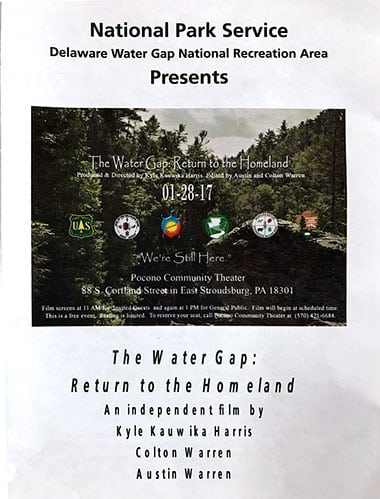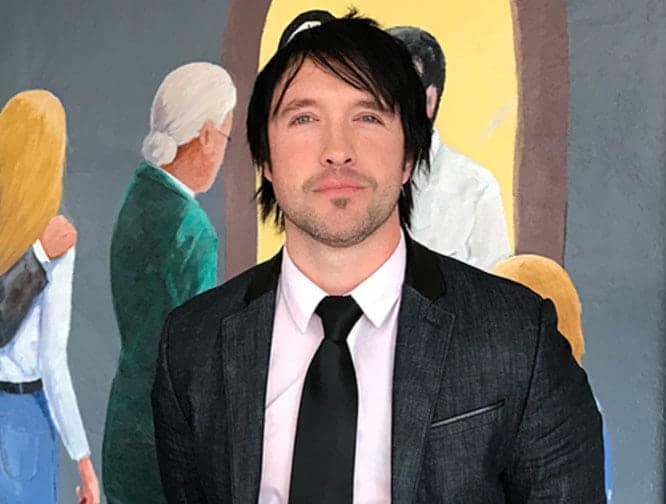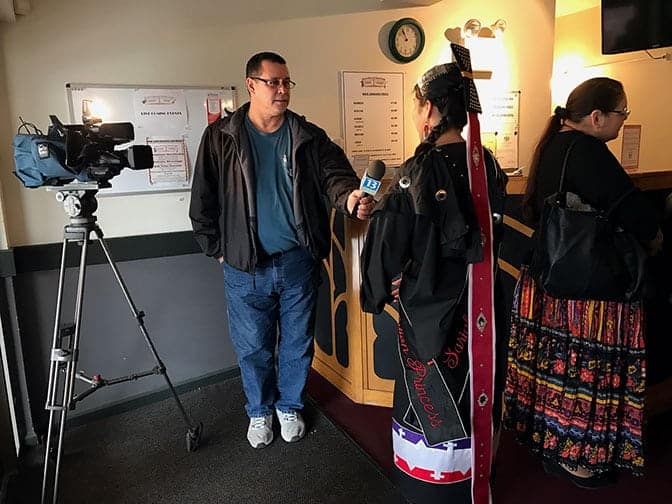Film shows Native American teens return to Delaware Water Gap
FOR THEM, it was coming home.
For the second year, the Delaware Water Gap National Recreational Area welcomed 15 teenagers from the three Lenni Lenape tribes who once inhabited the Delaware River area up into New York and the lower Hudson Valley.
It was a coming home and a coming together of three tribes: the Delaware Nation (based in Oklahoma) the Delaware Tribe of Indians (also based in Oklahoma) and the Stockbridge-Munsee Community of Mohican Indians of Wisconsin. All three tribes cooperated to send their sons and daughters to the two-week Native American Youth Camp held in the park.
The Water Gap: Return to the Homeland is the film that was made about their experiences. It was shown this Saturday, Jan. 28, at the Pocono Cinema and Cultural Center in East Stroudsburg, Pa. to a full house.

Harris
Kyle Kauwika Harris is the director. He obtained permission from the elders to make the film and spent most of the two weeks shooting, along with his two editors, Austin and Colton Warren. Because of the film, it's possible to share the experiences of these American Indian teenagers.
"It was, of course, educational for them. But it was, even more, a spiritual journey," he said.
There were archaeological sites to visit, where artifacts of their people are still being found. And a visit to New York City to see the National Museum of the Native American. Some of their distant relatives were in Manhattan before the Europeans arrived.
There were canoe trips — and of course, a capsize during a fierce summer storm (no harm done.) And trekking and climbing — one trip brought them to one of the ridges overlooking the Delaware River's plain near Milford, Pa.
Sharing star billing in the film was the river itself. Fans of the Delaware know how beautiful it is, and this film makes the most of its waterfalls, quiet forests and clear waters. But experiencing it through these teenagers' eyes is a revelation. Through the film, it becomes clear that most of the teenagers are not steeped in their own history and culture. As you can imagine, a family's history and culture is not the first priority for many young people.
But with the skillful guidance of the tribal chaperones, the many dedicated staff of the National Park Service as well as the Pocono Environmental Education Center, (there's a long important list of supporters — you can see it at the end of the story), the connection to a long-lost home was rekindled. The landscape itself is a revelation, since it's so different from where they live now.
The words that echoed throughout the film were "home," "strong," "the elders," "my tribe," "beautiful," "the Creator," "alone time," and "didn't know." Now they do.
Attending Saturday's event was Sariah Taylor Pemberton, 16, one of the camp's participants and this year's Delaware Nation Princess. She was dressed in full regalia, and drew many admiring glances. Pemberton was born into the Turtle Clan of the Lenape Tribe in Lawton, Oklahoma.
When asked what her job is as princess, she said: "To be respectful; to serve my elders; to be caring and loving to all; to show respect no matter what; to attend pow-wows."
Then, the Princess Program Coordinator Melanie Watkins-Quiver reminded her: "To represent the Delaware Nation at all times."
Seems like a lot for a 16-year-old, but armed with the experience of this summer camp, looks like she'll be able to handle it.
DWGNRA Superintendent John Donahue said that he had two goals for the 14 years he's been superintendent: to get young people involved with the recreation area, and also to increase Native American involvement.
"With this program, we achieved both of those goals," he said. "And it took nearly those 14 years to make this (the teenagers' camp) happen."
He noted that it was largely funded by some of the mitigation funds the park received from the crossing of the park by the Susquehanna-Roseland power line. A power line that was the subject of some opposition from environmental activists — you can read more here.
"It's exciting for us," he concluded.
You can reach the film's director, Kyle Kauwika Harris, at gedronlacy@yahoo.com.
Ready for that list? (It's long)
In addition to the tribes and the film makers: Pocono Environmental and Education Center; Peters Valley School of Craft; Friends of Delaware Water Gap National Recreational Area; U.S. Forest Service – Grey Towers National Historic Site; Upper Delaware Scenic and Recreational River; Temple University; Paul Nevin; Kristopher Beadenkopf; Monroe County Transit Authority; Kittatinny Canoes; Edge of the Woods Outfitters; The Village Farmer Bakery; Pocono Cinema and Cultural Center; Eastern National Parks and Monuments Association






